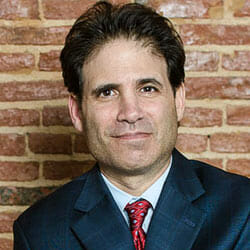Youth Athletics and Head Injuries
 When Dr. Ann McKee examined the brains of 202 deceased former football players, the results kept her up at night. In her research, McKee found that 87 percent – 177 players – had chronic traumatic encephalopathy (CTE). When her study is narrowed to former NFL players, the results were even more alarming; out of the 110 former NFL players she examined, 110 had CTE.
When Dr. Ann McKee examined the brains of 202 deceased former football players, the results kept her up at night. In her research, McKee found that 87 percent – 177 players – had chronic traumatic encephalopathy (CTE). When her study is narrowed to former NFL players, the results were even more alarming; out of the 110 former NFL players she examined, 110 had CTE.
McKee is the chief of neuropathology at the VA Boston Healthcare System and director of BU’s CTE Center. She has been researching these types of injuries for decades, playing the role of safety advocate and sounding the alarm over head injuries and CTE in athletes.
CTE is “a progressive degenerative disease of the brain found in people with a history of repetitive brain trauma (often athletes),” according to the CTE Center at the Boston University School of Medicine. These repetitive blows to the head aren’t just those that cause severe brain injuries, or even concussions. Evidence suggests that even sub-concussive impacts could cause CTE. Individuals facing such challenges might seek the guidance of a Baltimore brain injury lawyer to navigate the legal aspects related to brain injuries. Their expertise can be crucial for athletes and others suffering from the long-term effects of repetitive brain trauma.
For fans of professional football, these results are unsettling. It’s troubling to consider the fact that our nation’s most popular sport might be inflicting a degenerative brain disease on some of our most famous athletes. Even if the problem was confined to the professional level, it is a cause for concern. However, a growing body of research indicates that the prevalence of brain injuries extends far beyond the realm of professional football.
It’s possible, and increasingly probable, that young athletes who have had even brief stints playing football might also be plagued by related health problems later in life.
Head Injuries Among Young Footballers
A study in Nature’s Translational Psychiatry looked at 214 former footballers, 43 of whom played through high school and 103 of whom played through college. Researchers at Boston University found that people who participated in youth football before the age of 12 had double the risk of experiencing problems with behavioral regulation, apathy and executive functioning. They had triple the risk of developing problems with clinically elevated depression.
The New York Times pointed out that these results were in line with a 2016 study by Wake Forest School of Medicine doctors that found that “boys between the ages of 8 and 13 who played just one season of tackle football had diminished brain function in parts of their brains.”
One of the most alarming findings in the Wake Forest School of Medicine report was that “none of the players had any signs or symptoms of concussion.” This important footnote is vital to understanding the true extent of the problem. If these findings hold true even for young athletes who didn’t suffer a noticeable head injury, how severe are the consequences for those that have?
Around 1.2 million boys ages 6 to 12 participate in tackle football in the United States. Though that number has dropped by 20 percent since 2009, it still represents a substantial percentage of 3 million young people participating in tackle football. When you consider the fact that approximately 1.6 million to 3.8 million sports-related concussions happen in the United States every year, or that around 300,000 high school athletes suffer concussion every year, you begin to understand just how widespread the problem might be.
When Young Athletes Suffer Serious Brain Injuries
Dr. McKee grew up in Wisconsin watching football every weekend with her family, which included four brothers and a father who played football at the collegiate level. But as her decades of research on brain injuries mounted, her enthusiasm for the sport waned.
As McKee told Stan Grossfield of the Boston Globe, she stopped watching the sport entirely after she received the brain of a 13-year-old athlete who died after suffering a severe traumatic brain injury.
McKee is not an outlier in her concern for the well-being of athletes; nor, unfortunately, is the story of that 13-year-old as much of a rarity as we would like to believe. Among children ages 0 to 14, traumatic brain injuries result in an annual average of 2,685 deaths, 37,000 hospitalizations and 435,000 emergency department visits in the United States, according to the Centers for Disease Control and Prevention. While many of these injuries are the result of falls and vehicle crashes, many others occur while playing sports.
A Problem Beyond the Gridiron
Football is not only the most popular sport for spectators in the United States, it’s also one of the favorites among young participants. It makes sense that so much focus would be placed on a sport as revered as football. But head injuries among young athletes is also a problem in other sports.
For example, research conducted at Northwestern University found that female soccer players suffer the most concussions in high school sports. Researchers also found that in gender-matched sports (sports played by males and females), girls suffered a much higher rate of concussion than boys. The most significant increases in the number of concussions during the period studied by researchers occurred in boys’ baseball and girls’ volleyball.
What Parents Should Take Away from Research
There is much that we can learn from the findings of research on youth athletics and head injuries. Parents should be told the risks of letting their children get involved in any contact sport, so they can make an informed decision. Coaches and other educators should also be educated on the symptoms and risks associated with head injuries, so they can reduce the likelihood of putting a child in harm’s way.
We know more about the impact of a head injury than we ever have, and we will continue to learn more as researchers dig even deeper on the topic. However, we already know enough to understand that the consequences of even “mild” traumatic brain injuries could be both significant and permanent.
Steven H. Heisler represents clients across Maryland in filing personal injury claims to receive compensation for the harm they’ve suffered. If you or your loved ones would like to learn more about filing a claim, contact Baltimore personal injury attorney Steven H. Heisler today to schedule a free consultation.

Attorney Steve Heisler
Steve Heisler decided in 1996 that he was going to focus his law practice exclusively on injury cases. Since then, he has been representing injured people against insurance companies, disreputable medical practitioners and Big Pharma, and doing it with compassion, honesty and level-headed rationality. [ Attorney Bio ]

